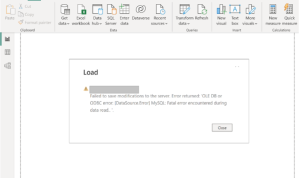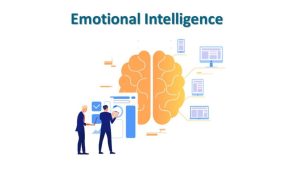The Importance of Data Storytelling in Business Intelligence cannot be overstated, as it transforms raw data into meaningful narratives that drive decision-making. In a world inundated with information, the ability to present data in a captivating and relatable way is what sets successful businesses apart. By weaving together facts and figures with storytelling techniques, organizations can not only engage their audience but also foster a deeper understanding of their data.
This approach empowers decision-makers to glean insights quickly and act decisively.
Data storytelling goes beyond mere presentation; it combines analytical rigor with creative expression, ensuring that complex data is not just understood, but felt. In the realm of business intelligence, where the stakes are high, the ability to communicate effectively can mean the difference between thriving and merely surviving. Understanding the nuances of data storytelling is essential for anyone looking to harness the full potential of their data assets.
In a world saturated with information and diverse voices, the ability to persuade effectively has never been more critical. Whether you’re crafting a sales pitch, writing a compelling article, or giving a presentation, mastering the art of persuasion can set you apart from the crowd. This article delves deep into the techniques, strategies, and nuances of persuasive communication, helping you harness the power of words to influence and inspire.
Understanding Persuasion
Persuasion is not merely about convincing someone to do something; it’s about connecting with them on a deeper level. It’s an intricate dance of logic, emotion, and credibility. To be persuasive, one must first understand the audience’s needs, desires, and motivations. Before you can influence others, you must establish a rapport and trust. This can be achieved through empathy, active listening, and demonstrating genuine interest in their perspectives.
The Elements of Persuasion
There are three fundamental elements that underpin the art of persuasion: ethos, pathos, and logos. Each of these elements plays a crucial role in how messages are received and acted upon.

Ethos: The Credibility Factor
Ethos refers to the credibility and ethical appeal of the speaker or writer. To persuade effectively, one must establish authority and trustworthiness. This can be achieved by showcasing expertise, sharing relevant experiences, and aligning with the audience’s values. When your audience believes in your credibility, they are more likely to be open to your message.
Pathos: The Emotional Connection
Pathos involves appealing to the emotions of your audience. This can be done through storytelling, vivid imagery, and relatable examples that evoke feelings. When you tap into the emotional core of your audience, you ignite a connection that transcends mere logic. People are more likely to be swayed by emotions than by facts alone. Thus, harnessing the power of storytelling can create an unforgettable impact.
Logos: The Logical Appeal, The Importance of Data Storytelling in Business Intelligence
Logos represents the logical aspect of persuasion. It involves using facts, statistics, and sound reasoning to support your arguments. A well-structured argument that incorporates data and analysis not only enhances your credibility but also appeals to the rational side of your audience. Balancing logos with ethos and pathos creates a compelling narrative that is hard to resist.
Techniques for Persuasive Communication
Now that we have explored the foundational elements of persuasion, let’s look at some practical techniques that can enhance your persuasive communication skills.
1. Know Your Audience
Understanding your audience is paramount. Research their demographics, interests, and pain points. Tailoring your message to address their specific needs will make your argument more relatable and compelling. The more you know about who you are communicating with, the better you can align your message with their values and beliefs.
2. Use Clear and Concise Language
Clarity is key in persuasive communication. Avoid jargon and overly complex language that can alienate your audience. Instead, use clear and concise language that is easy to understand. This will ensure that your message is accessible and digestible, allowing your audience to grasp your arguments fully.
3. Leverage the Power of Stories
Stories are a powerful tool for persuasion. They create a sense of connection and empathy, allowing your audience to visualize the implications of your message. Whether it’s a personal anecdote or a case study, storytelling can make your arguments more relatable and memorable.
4. Employ the Principle of Reciprocity
The principle of reciprocity suggests that people are more likely to respond positively to those who have given them something first. In persuasive communication, this could mean offering valuable insights, assistance, or even a free trial before making your request. By establishing a sense of giving, you create a foundation for your audience to feel inclined to reciprocate.
5. Use Social Proof
Humans are inherently social beings, often looking to others for cues on how to behave. Incorporating testimonials, case studies, or statistics that showcase the popularity of your idea can enhance your persuasive efforts. When people see that others have benefited from your proposition, they are more likely to follow suit.
Overcoming Objections: The Importance Of Data Storytelling In Business Intelligence
No persuasive effort is complete without addressing potential objections. Anticipating and acknowledging counterarguments demonstrates that you are considerate of differing viewpoints. This not only enhances your credibility but also strengthens your argument. Provide well-reasoned responses that address concerns while reinforcing your message.
Practice Makes Perfect
Like any skill, persuasion takes practice. Engage in activities that allow you to hone your persuasive communication skills, such as public speaking, writing, or negotiating. Seek feedback and learn from each experience. The more you practice, the more confident and effective you will become.
Conclusion
In conclusion, the art of persuasion is a powerful tool that can transform the way we communicate. By understanding the fundamental elements of persuasion—ethos, pathos, and logos—coupled with practical techniques, you can enhance your ability to influence and inspire others. Remember, effective persuasion is not about manipulation; it’s about fostering genuine connections and creating meaningful dialogue. So, step into the world of persuasive communication, and watch your influence soar!








